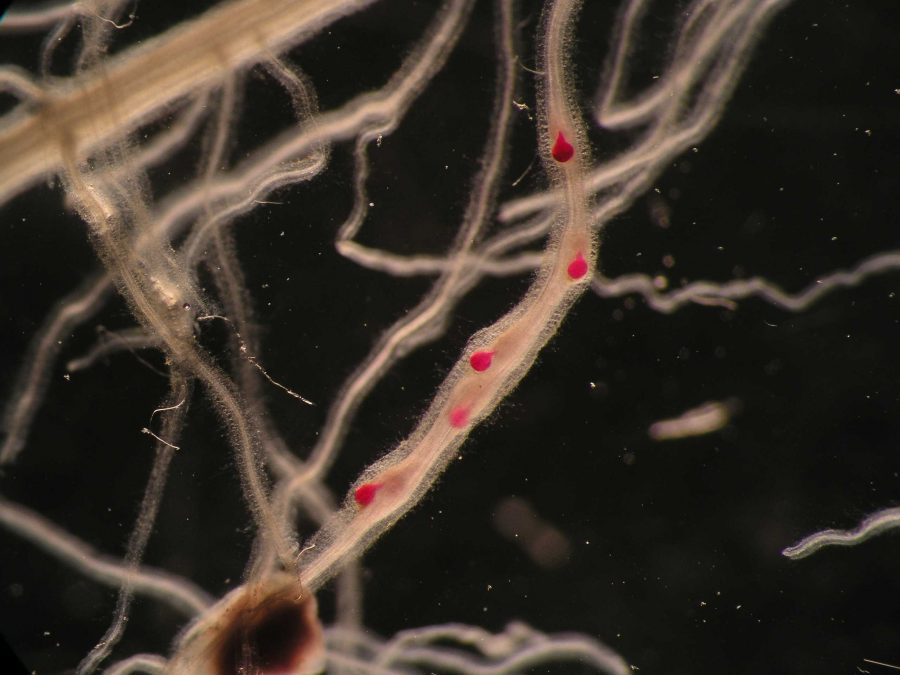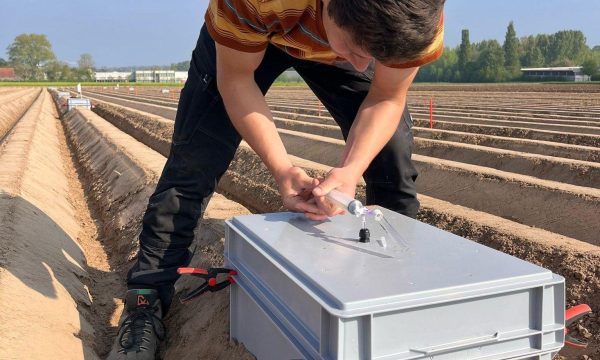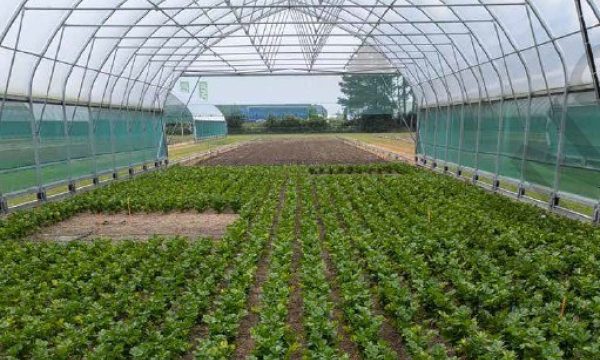Project news Plant attacker for March 2020: the root-knot nematode Meloidogyne sp.

Meloidogyne spp. are microscopically small worms. They belong to the Nematoda or nematodes, a very diverse group of animals. Some of them are specialized as plant parasites. Here, the so-called “root-knot nematodes” are the most important because they cause crop yield losses in all kinds of crops worldwide. About 100 species have already been described. For Europe, particularly M. chitwoodi and M. fallax are in the spotlight due to their increasing effect on important crops such as potatoes and field vegetables. Subtropical species such as M. incognita and M. javanica are important in Southern Europe, as well as in Northern European greenhouses with fruiting vegetables. New subtropical species entering Europe include M. enterolobii, M. ethiopica, M. luci.
After hatching, juvenile root-knot nematodes move through the soil to the roots of host plants. In the root they look for a suitable place and then secrete certain substances which cause the plant cells to transform into a so-called giant cell. In this way, the nematode receives nutrients from the plant, which are weakened and therefore yield less. The plant reacts by forming a lump (“knot”) at the place where the nematode is located, hence the name “root-knot nematode”. After several moltings a female or male is formed. Females lay about 300 eggs in an egg mass that is usually deposited in the soil outside the root. Soil is therefore an important source of nematode dispersal. In potatoes, tubers are also infected with Meloidogyne sp. and the egg masses remain under the skin. This forms an ideal method for spreading to other tubers, especially in the case of seed potatoes.
In Belgium, Meloidogyne species are occasionally detected during import controls on ornamental plants during official 'phytosanitary controls'. In addition seed potatoes are systematically monitored for the presence of M. chitwoodi and M. fallax. Starting in 2020 a survey of European fields will be performed to better map the distribution area. ILVO will participate as a partner of the European Reference Laboratory for Nematodes by guiding all national reference laboratories in the implementation of a correct diagnosis. Further, two research projects (VLAIO-Groenbedekkers and VLAIO-Melobio) are testing various management methods for Meloidogyne spp. for field crops and organic cultivation.


Photo of carrot with female nematode (ILVO)
Photo of symptoms on carrot/potato (ILVO)


